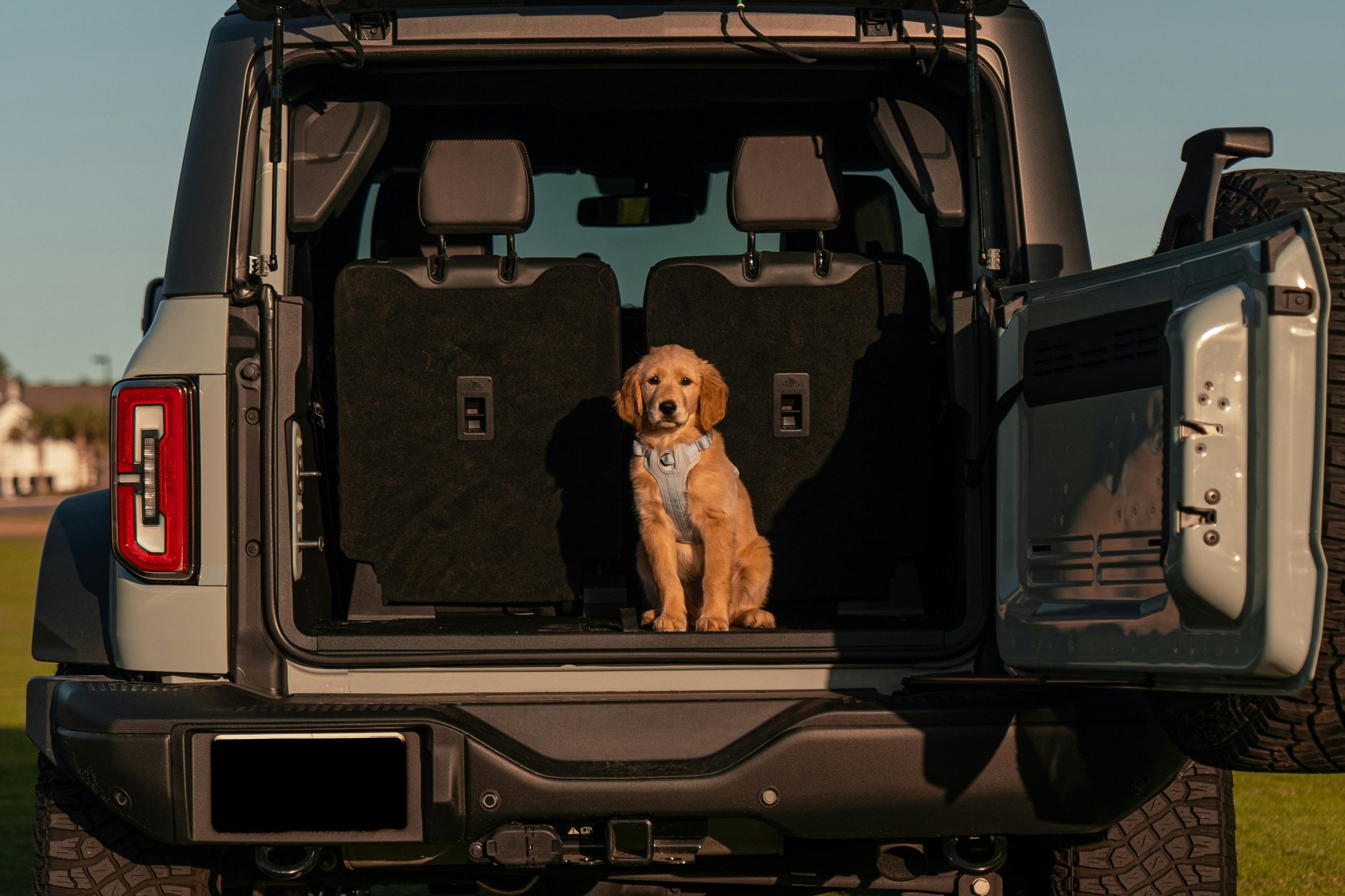
WHAT YOU WILL NEED
LEASH
A good 4-6ft leash is a staple in dog training. Leather leashes are much gentler on the hands than most other materials.
PBNANAS
Bil-Jac makes a variety of amazing treats (the dogs agree) and these are no different. Great for dogs that love peanut butter!
CLICKER
Do you need it? No, but it can speed up learning if used correctly. If you want to geek out on training, this is for you. If not, skip it.
TREAT POUCH
A treat pouch is a great way to make sure you have treats when you need them. Leave it next to your leash and you will be set!
NOTE: All products have affiliate links, which means I earn a small commission on each item purchased from the links. I appreciate your support and wish you happy training!
OVERVIEW
The safest way for your dog to ride in the car is in a crate. If your dog is not used to riding in vehicles and you have them loose in the car, they may start to behave in a manner that could distract you and ultimately lead to an unsafe situation. If you are alone in the car, the best thing to do is have your puppy crated. Once you know your puppy is comfortable traveling in the car, it is time to teach your puppy how to ride in the car when they aren’t crated. For this you will need to enlist the help of a second person (preferably an adult). The passenger should have the puppy lie on the floor of the car by asking for a “down.” Make sure the area they are in is comfortable and has a soft place for them to lie, like on a blanket. It is also a great idea to have their favorite chew toy to give them something to focus on. If your puppy is lying in the foot well of the front passenger seat, it is particularly important that they maintain a “down” position in case the airbag deploys. It could be safer to have the puppy or dog in the back seat or, in the cargo area of a car with a hatchback.
Phase 1: Teach the behavior
Step 1: If your puppy has positive feelings about the car, skip to step 2. If your puppy has neutral feelings or isn’t comfortable riding in the car, start feeding them their meals in the car. Initially have the car off. As your puppy becomes more and more comfortable progress to having the car running. When you think your puppy is relaxed, start driving the car short distances (even just to the end of the driveway is fine). Slowly build up their comfort with riding in the vehicle.
Step 2: Once your puppy has positive associations with the car and is willing to get in with little fanfare, we can start to put the behavior on cue. Bring your puppy up to the car and toss a treat into the floorboard. Initially you may need to throw a few treats to get your puppy all the way in. Once you are at a stage where your puppy willingly goes into the car for one treat, progress to the next step.
Phase 2: Fade the lure and solidify a hand cue
If your puppy enjoys car rides, this behavior will progress quickly, and the process may not need to be as structured as I describe it here. If your puppy is still leery of the car or if they get car sick, this will be a much longer journey because it isn’t just teaching a behavior. It is asking your puppy to work through their fear and anxiety.
To teach the hand cue, start the session by motioning into the car to encourage your puppy to get in. If your puppy hops right in, click and treat. If they are excited about the idea of car rides, you can quickly move to phase 3 and 4.
If your puppy is even remotely hesitant, motion into the car and then toss a treat in. Practice this 5 times. On the sixth repetition, motion into the car, but don’t toss in a treat. You can be encouraging, but wait. Once your puppy jumps in on their own, click and treat. Practice this behavior over several sessions until they are consistently hopping into the car quickly without following a treat.
Phase 3: Teach the verbal cue
Tell your puppy “load up” and then motion into the car. Click and treat when they get it right. Practice this several times over several sessions. Eventually, they will anticipate that “load up” is a signal to get into the car and will not need you to use your hand cue.
Phase 4: Selective reinforcement
If your dog has created positive associations with the car, it is likely that you will be able to quickly get to a point where you no longer use treats at all. This is because the prospect of going for a ride and arriving somewhere fun is its own reward.
If your puppy continues to have reservations about riding in the car, continue to reward the behavior 100% of the time. If they willingly get in despite not enjoying a car ride, that definitely deserves a treat. This is a much more difficult cue for a dog that doesn’t enjoy car rides.




